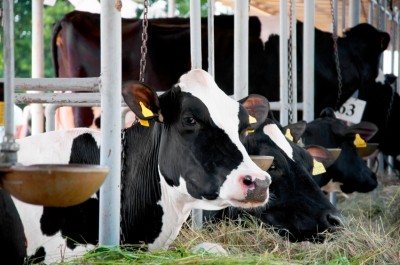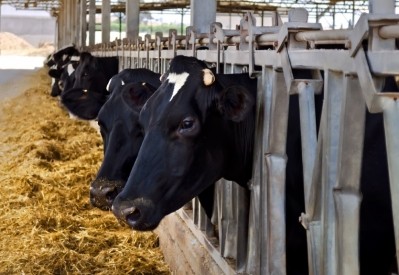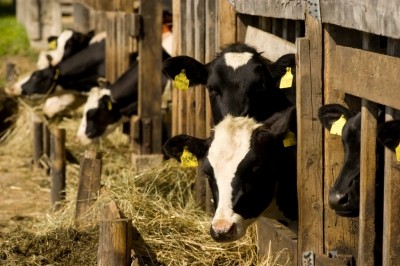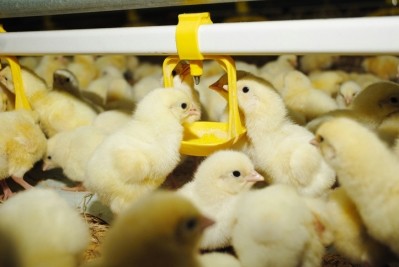Rumen-protected folic acid may boost dairy cattle production, reproduction
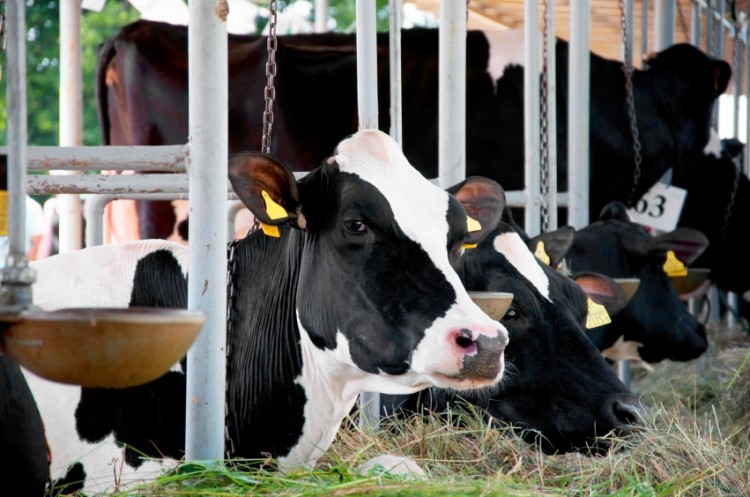
The rumen-protected folic acid (RPFA) feed additive also may benefit energy balance and milk protein levels reported a team of Chinese researchers. They examined the influence that RPFA had on dairy production, energy balance, reproductive performance and blood parameters.
“Supplementary RPFA in cow diets had positive effects on feed intake and milk production, increased concentrations of plasma glucose and serum folates, decreased plasma concentrations of NEFA [non-esterified fatty acids] and BHBA [eta-hydroxybutyrate] and serum concentration of homocysteine, and improved energy balance and reproductive performance,” they said. “These data suggest that RPFA improves lactation, energy balance and reproductive performance in a dose-dependent manner.”
Why rumen protected folic acid
As dairy cows have seen increases in milk production and milk component yields, there may be a correlating requirement for additional folic acid, said researchers. The amount of folic acid synthesized in the rumen may not be sufficient.
Previous studies have demonstrated that adding folic acid to dairy cattle diets has boosted milk and milk protein production, they said.
However, a large amount of supplemental folic acid is degraded by microflora in the rumen, researchers said. “Thus, research on lactation performance, energy balance, blood parameters and reproductive performance influenced by the supplements of RPFA is necessary,” they added.
“The aim of this study therefore was to determine the effects of increasing RPFA supplements from 3 weeks pre-partum to 15 weeks of lactation on DM intake, milk production, energy balance and reproductive performance of cows,” they said.
Experiment
In the experiment, 96 multiparous cows were given one of four diets, said researchers. The treatments included no supplement, and a low (LRPFA), medium (MPRFA) or high (HPRFA) amount of a non-commercial rumen-protected folic acid along with a basal diet.
The trial ran from three weeks prior to expected calving through 15 weeks after parturition, they said.
“Degradability of RPFA in the rumen and in the small intestine was determined in situ using rumen and duodenal cannulated cattle, and they were 300 g/kg and 500 g/kg, respectively,” they said.” Therefore, dairy cows in control, LRPFA, MRPFA and HRPFA treatments received 0, 35, 70 and 105 mg of folic acid per cow per day, respectively.”
Dry matter intake was determined daily; milk yields were recorded from parturition until day 105; milk sample were done weekly and three sets of blood samples were taken. Body weights were noted during parturition and on days 35, 70 and 105.
Conception rates, along with the amount of breedings per conception, were recorded said researchers.
Results
Overall, results from the experiment suggested that the supplement improved nutrient ingestion, reproduction, energy balance and performance depending on RPFA dose, said the scientists.
The dry matter (DM) and net energy (NE) intakes increased linearly with amounts of RPFA, they said. “Cows supplemented with RPFA showed a similar pattern of decreased loss of body weight (BW) and improved energy balance (expressed in MJ/cow/day) during the 105 days in milk (DIM) period,” they added.
Milk yield, milk protein levels and production also increased with additional supplement, they said. Milk fat content and production also tended to increase in a linear pattern.
“An interaction between RPFA and lactation week was noticed for the data of intake and milk production,” said researchers. “Intake of DM was higher for MRPFA and HRPFA than for control except at week 1, 2, 5, and 10.”
Intake of NE, milk production and milk protein followed a similar pattern, they said.
Additionally, plasma levels of glucose, and serum concentrations of folate and methionine increased linearly, they said. “Whereas concentrations of non-esterified fatty acids (NEFA), beta-hydroxybutyrate (BHBA) and serum homocysteine linearly decreased,” they added.
“Total conception rate and the percentage of cows pregnant at 150 DIM linearly increased, DIM at first breeding and breeding per conception tended to change linearly with increasing RPFA supplementation,” said the scientists.
Source: Animal Feed Science and Technology
Title: Effects of dietary supplements of rumen-protected folic acid on lactation performance, energy balance, blood parameters and reproductive performance in dairy cows
DOI: published online before print: 10.1016/j.anifeedsci.2016.01.005
Authors: H.Q. Li, Q. Liu, C. Wang, Z.M. Yang, G. Guo, W.J. Huo, C.X. Pei, Y.L. Zhang, S.L. Zhang, H. Wang, J.X. Liu, Y.X. Huang
